
Stories by the “Creative Curious Travellers 2017” about the city of Pistoia. Thanks to: Giorgio Tesi Group | Discover Pistoia | NATURART | La Sala | FAI Giovani – Pistoia | BrickScape.it | Brandini – Pistoia | Comune di Pistoia | Pistoia Italian Capital of Culture 2017.
PISTOIA Receiving the invitation to discover the Tuscan city was a news that I greeted with great joy. Nothing entices me more than the idea of exploring a new place and discovering all its secrets. I have to admit that I knew little about Pistoia and so beyond my enthusiasm there was also some fears leading me: would I have found bread for my teeth in this unknown city? Today, at the end of this experience, I can answer with confidence: yes. Because Pistoia was a revelation, a small jewel ignored by the great masses (a pity, but perhaps a fortune) that hides so many treasures.

I spent three very intense days in Pistoia. I strolled around and wandered through all its streets, visited her churches, tasted her typical products and eventually started to feel a little at home. The city is small, man-made, in the old town you walk on foot, there are few cars and many locals are equipped with bicycles. So I found myself in a perfect dimension and from the very first moment I stepped into the city (despite the shower that welcomed me) I started exploring to look for the most picturesque places in Pistoia.
San Giovanni Fuorcivitas Church’s Facade
One of the main features of Pistoia is the architecture of its “zebra-ish churches“ (the term used for the first time by Pistoia architect Giovanni Michelucci in 1992) for the recurrent white-black bicromio present on the facades (as well as in many urban details). The most spectacular of these is the Romanesque church of San Giovanni Fuorcivitas: its side facade gives a perfect background to snap a shot to people walking by.
> here an artiche dedicated to “The Zebra Churches of Pistoia: the black and white striped city”
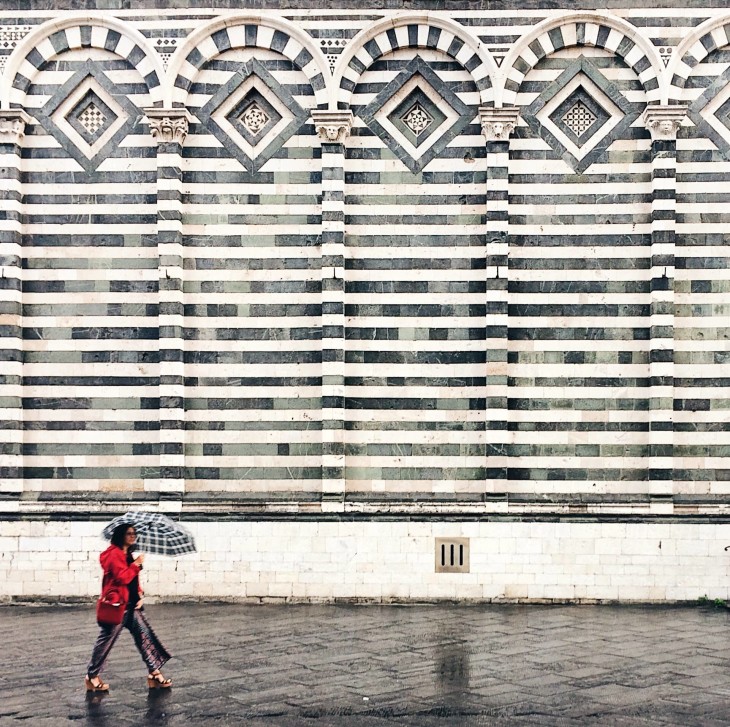
Palazzo del Comune’s Spiral staircase
You must know that the town hall hides a treasure: behind a locked door there is a very large stone spiral staircase but the only way to access to it is to ask the reception of the Civic Museum to visit it because it is not directly accessible to the public.
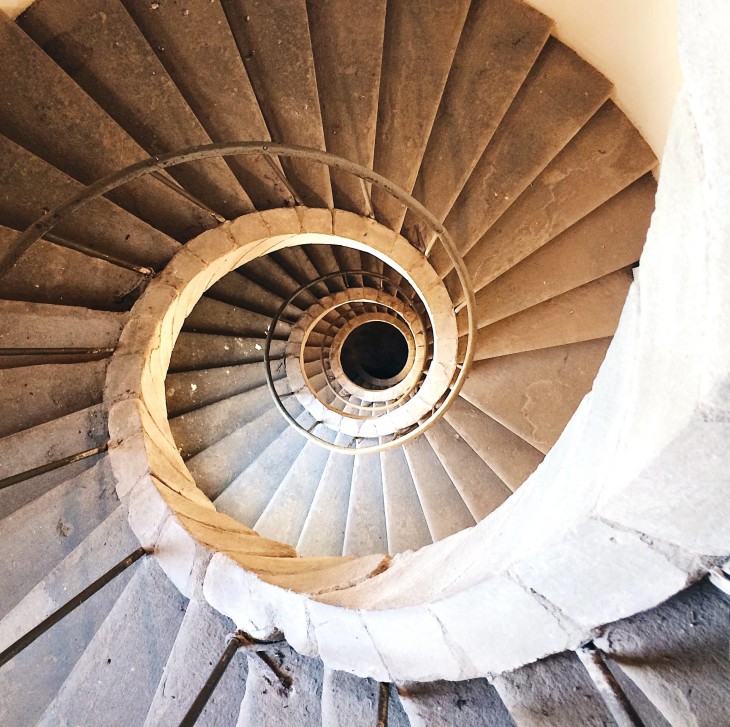
Ceppo Hospital
It is the city’s oldest hospital, founded in 1277, which remained operational until 2013 when the new one was built. The facade of the Ceppo Hospital, with its loggia and colorful decorations, is really remarkable. The festoon in glazed terracotta – by Giovanni della Robbia (sculptor and ceramist) and other artists of the Tuscan Renaissance – is one of the symbols of Pistoia in the world. At the Puškin Museum of Fine Arts in Moscow and at the Victoria & Albert Museum in London are located some reproductions.
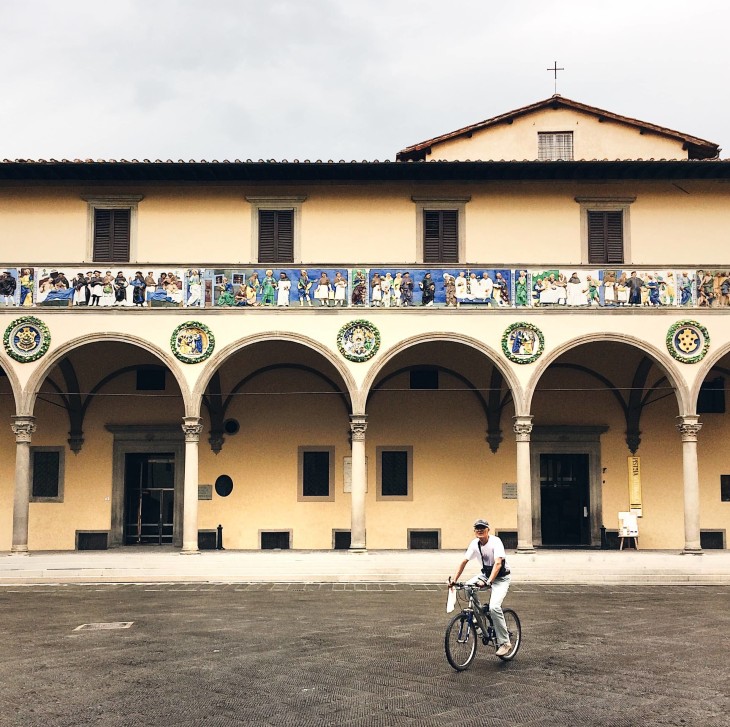
On Top of the Bell Tower
I have a true passion for the bell towers and towers because I love to see things from above. And the Bell Tower of the Cathedral of Pistoia (named Cathedral of San Zeno), although not particularly high, gave me an unforgettable view. The climb is not very difficult, you have to make about 200 steps to get 60 meters above the city.
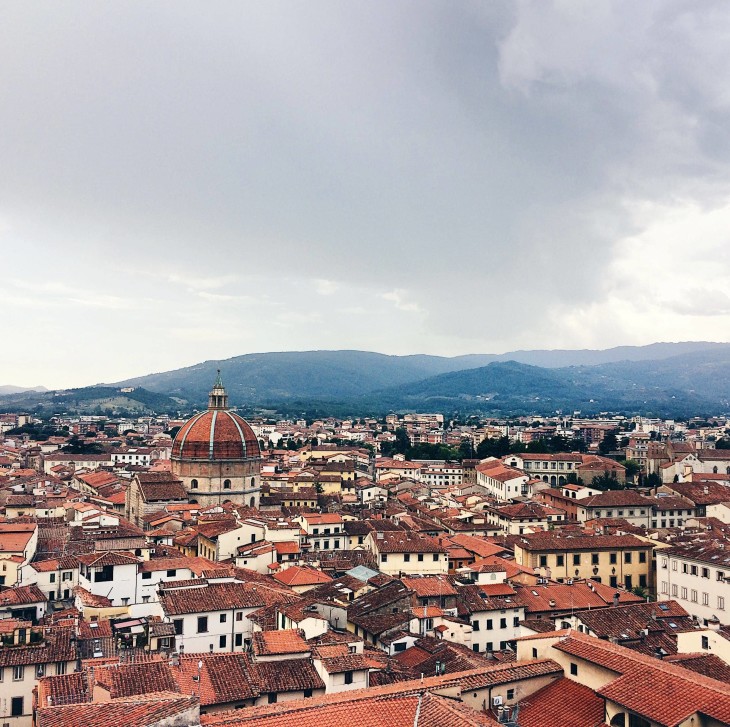
Tau‘s Church
This tiny, deserted little church astonished me with her beauty. Its walls and ceiling are completely covered with frescoes of the ‘300. Actually in 1787, when it was disenchanted, it was divided into apartments that were then sold to private citizens. Today it is part of the Fondazione Marino Marini, of which you can also visit the next-door museum, dedicated to the well-known Pistoiese artist.
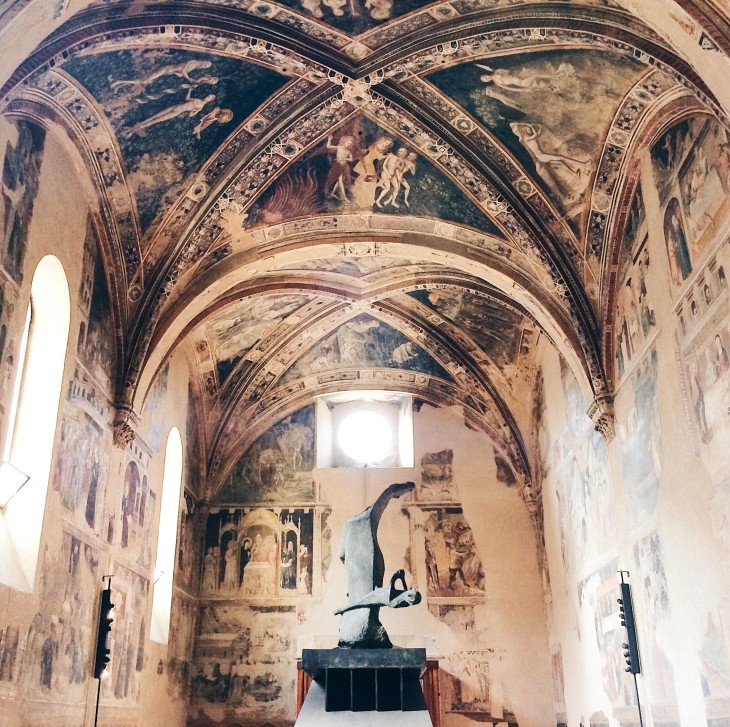
Raven Graffiti
This wall framed by an arc, in Sant’Anastasio Street, looks like the perfect canvas for a murals. And whoever designed this funny raven must have thought the same!
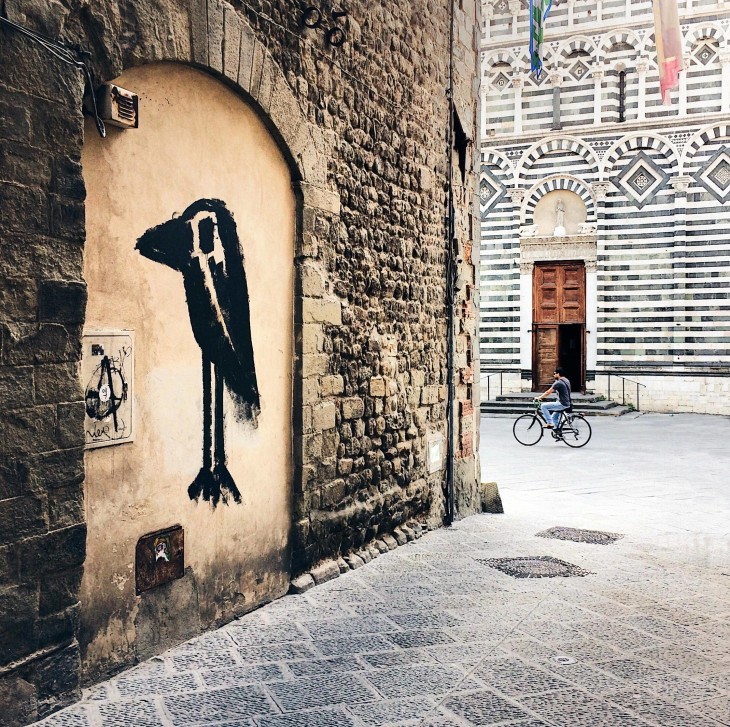
Alleys, doors and store’ signs
But the thing I loved more about Pistoia are its streets. Every ten steps I did, I seemed to find something curious and interesting to photograph. And this is because the city is particularly photogenic: in the old town there are almost no machines and this means free roads. The color of the walls and doors is pale, often a little spoiled by time, just enough to create textures that look like art. Bicycles and signs lie here and there, as if they were striking a pose. A perfect mix of ingredients to shoot a city. Below is a selection of some of my favorite places and shots.
My tour in Pistoia ends here, in its yellow and orange alleys. But I hope you start yours because this town is a real treasure in Tuscany and, next time you will be here, I strongly recommend you to dedicate at least one day to Pistoia!
Here other two posts dedicated to Pistoia:




